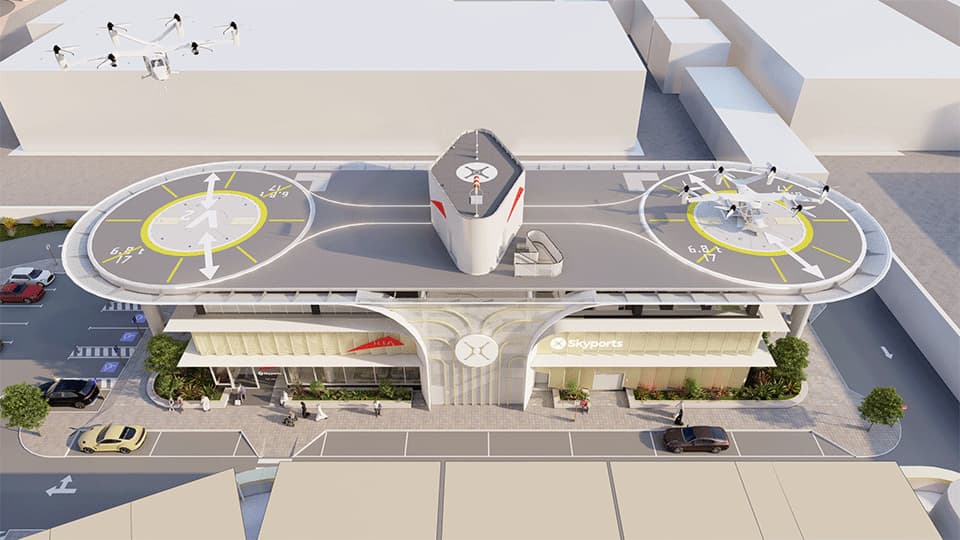Ali is leading the electrification of the pioneering electric taxi project in Dubai, with the service set to launch by 2026 in his role as Head of Electrification at Skyports Infrastructure.
Following a 2024 partnership between Dubai’s Roads and Transport Authority, Joby Aviation, and Skyports, the project integrates advanced vertiports and sustainable aviation to transform urban mobility and set a global standard for low-emission transport.
Reflecting on his journey from aerospace engineering to leading electrification in Dubai, Ali shared:
“A key turning point was my transition from traditional power networks into sustainable transport infrastructure. After joining UK Power Networks, I led some of London’s early efforts in enabling EV charging deployment across the city. That work gave me first-hand insight into the complexities of electrification at scale.
“The real inflection came when I was approached by Skyports Infrastructure to establish multi-megawatt charging infrastructure for a new generation of aircraft which integrates maturing electric motor and battery technology.
“It was a chance to apply my engineering background, passion for aviation, and experience in EV infrastructure to help shape a new sustainable mode of transport in aviation, urban air mobility. The idea of building something from the ground up that could positively reshape cities was too exciting to pass up.”
When talking about how his experience working on EV infrastructure in the UK to build future-ready vertiport networks in Dubai, he said:
“Working on charging station rollouts in a dense city like London taught me the importance of forward planning, stakeholder engagement, and flexibility in design. These lessons are critical in Dubai, too, where we are introducing high-powered, fast-charging Vertiports for eVTOLs in four high-demand locations under the patronage of the Roads and Transport Authority (RTA), that also encompasses multi-modal (including micro-mobility) charging facilities.
“Skyports Infrastructure has also recently taken over operations at the Downtown Manhattan Heliport (renamed Downtown Skyport), one of the busiest in the United States. Retrofitting a high-traffic site, in a dense and premium urban environment like New York city, presents even greater challenges, requiring innovative design, precise coordination, and adaptive infrastructure solutions. In both cases, you need to work closely with utilities, plan for scalability, and balance ambition with practical constraints like space, power availability, and regulation.”
Ali explained:
“One major insight is the importance of adaptability. No two sites are the same, infrastructure needs to be modular, scalable and agile enough to evolve with urban growth and policy changes.
“We’ve also seen that early engagement with local authorities and utility providers is key, especially when you’re introducing new technologies like microgrids or battery energy storage systems to facilitate fast charging. Perhaps most importantly, sustainability and interoperability can’t be an afterthought, it needs to be engineered into the core of your design from day one.”
With Dubai set to launch the world’s first commercial eVTOL network in 2026, Ali said:
“The scale of impact excites me most. We’re not just building vertiports, we’re enabling a new era of mobility that’s faster, quieter, and greener. Technically, I’m excited about integrating smart energy systems that dynamically manage high-powered aircraft charging in space- and power-constrained environments.
“We’re pioneering solutions like DC microgrids, dynamic load management, and EMS-driven scheduling. But the real excitement comes from knowing this infrastructure will eventually make cities more connected, efficient, and liveable.”
